Drawn from FishWise’s nearly 20 years of experience and anonymous feedback provided by U.S. retailers, SALT recently published a review highlighting how retailers have evolved over time to address the need for end-to-end, electronic, and interoperable seafood traceability to combat illegal, unreported, and unregulated (IUU) fishing. The trends and findings outlined in the report aim to help the seafood industry understand the progress it has made and demonstrate the power that end-buyers can have on an entire supply chain. There is intrinsic value in documenting past, current, and future obstacles and opportunities for improvement. It helps show how to overcome previous challenges and share lessons learned so that seafood companies and seafood importing country governments can understand and prepare for the ever-shifting seafood traceability movement.
Past
Over the past few decades, U.S. retailers have made progress integrating traceability into their business practices. Traceability has become a necessary tool for supply chain management as food systems have globalized and infrastructure has improved to mass produce, process, and store products. Despite traceability being a relatively new concept, companies have been motivated to improve the traceability of globally traded commodities, like seafood, to meet consumer demands, remain competitive, and meet regulatory compliance.
SALT recognizes that implementing (electronic) traceability systems can be challenging, but by partnering directly with non-governmental organizations (NGOs) and/or among pre-competitive working groups, U.S. retailers can accelerate their progress. However, implementation takes time and governments must recognize industry’s capacity challenges to fulfill compliance needs readily. For example, the Country of Origin Labeling (COOL) regulation revealed that it takes time for companies to adapt to new data requirements. Even though COOL became effective in 2005, retailers were still challenged with collecting this information from their supply chain 10 years later. This implementation challenge demonstrates the importance of clearly defined definitions and government outreach and communication when introducing new regulations.
Present
Fast forward to 2022, many U.S. retailers have now made public-facing commitments and/or participated in various working groups. Sustainable seafood commitments are often the first step retailers take when implementing a responsible seafood program and are published while the company reviews and vets products against their new policy1. These activities are important to share goals and policies with consumers and encourage corporate transparency.
As more retailers create seafood sustainability programs, increased data quantity and improved data quality are needed to ensure products are meeting company policies. With this shift towards quality data, there is also a move towards event-based traceability, which designates key data elements (KDEs) to be collected during specific critical tracking events (CTEs) (i.e., harvesting event, processing event, etc.). CTEs provide uniformity to complex supply chains and the KDEs give visibility into each activity as the product changes hands. To assist with clear communication and expectations, industry standardization across the entire supply chain helps companies understand their data responsibilities (e.g, data sharing) and supports efficient implementation of effective traceability systems.

Parallel to industry efforts to improve data quality and quantity, there is also a push for improved traceability and verified legality of products imported into the United States. For example, the Seafood Import Monitoring Program (SIMP), launched in 2018, requires record-keeping for 13 imported seafood species groups (including information on harvest, transshipment, landing, and processing.). Including data for higher-risk critical tracking events and events with minimal oversight and monitoring, like at-sea transshipment, is an important step in identifying potential IUU activity2. Although product data captured via traceability systems is increasingly being used to assess risks beyond traditional food safety, specific challenges around collecting and sharing at-sea transshipment data still remain.
Future
Seafood traceability has come a long way since its inception as a tool to address food safety. Now, more than ever, consumers care about the provenance of the products they buy and the companies they are supporting. This interest comes as a response to concerns around food safety, human rights, data security, and ecological impact3. Retailers realize that transparency can differentiate their brands, making them more competitive, and improve consumer trust by telling the story of a product and their company’s values. To maintain transparency with their suppliers and consumers and hold businesses accountable, it is important for all companies within the seafood supply chain to publicly report on seafood procurement and policies, such as vessel codes of conduct or sourcing requirements.
Given that IUU fishing can undermine environmental sustainability, labor and human rights, and effective management of fish stocks, the U.S. government and U.S. retailers have expanded the use of traceability to combat IUU fishing. To address these concerns holistically, there are opportunities to improve traceability systems by considering social responsibility, advancing interoperability of numerous technology solutions, and incorporating robust verification of data and product claims. Companies that commit to transparency demonstrate their dedication to advancing traceability systems, sharing progress publicly, and responsibly-sourcing seafood products for their consumers.
The traceability landscape has shifted and grown dramatically over the past two decades. The industry transitioned from basic data collection to robust, standardized efforts. Retailers, as an end-buyer responding to consumer and regulatory demands, have driven full chain traceability forward and away from “one-up, one-down” systems. End-to-end traceability will only improve as companies continue to implement solutions that are interoperable, electronic, and standardized. As a tool to collect product data, traceability is powerful when paired with verification and transparency. These activities simultaneously support due diligence and holistic sustainability efforts that address the need for an environmentally sustainable, socially responsible, and financially viable seafood industry. A coordinated effort is stronger than a singular one. End-to-end, electronic, and interoperable seafood traceability cannot be achieved alone.
cover photo: nonnie192, stock.adobe.com
1 The Conservation Alliance for Seafood Solutions, 2014.”Business Commitments to Sustainable Seafood: Success Stories and Lessons Learned”
2 Global Fishing Watch et al., 2021. “Enhanced Regulation, Monitoring, and Control of Global Transshipment Activities”
3 Baris Kavakli, Forbes, 2021. “Transparency Is No Longer An Option; It’s A Must”
4 United Nations Guiding Principles on Business and Human Rights, International Labour Organization’s Core Conventions, Monterey Framework for Social Responsibility
